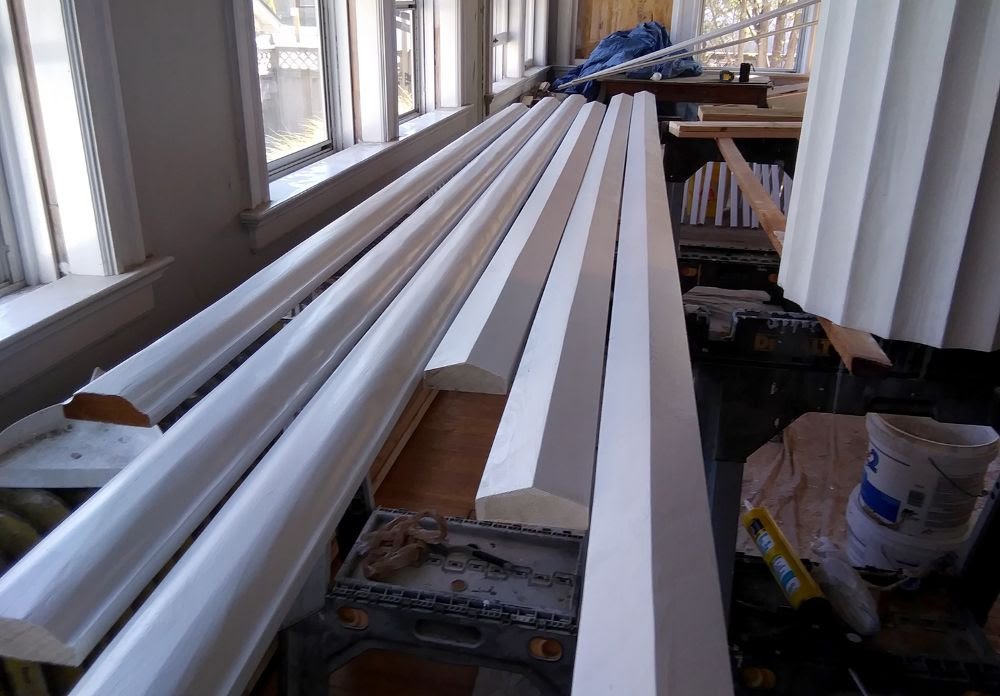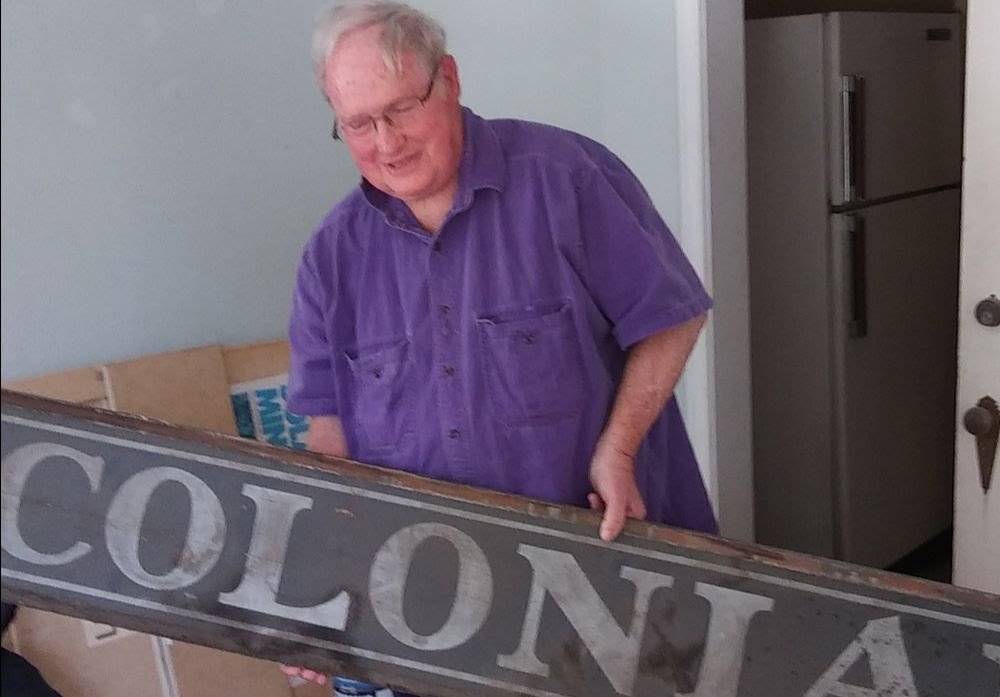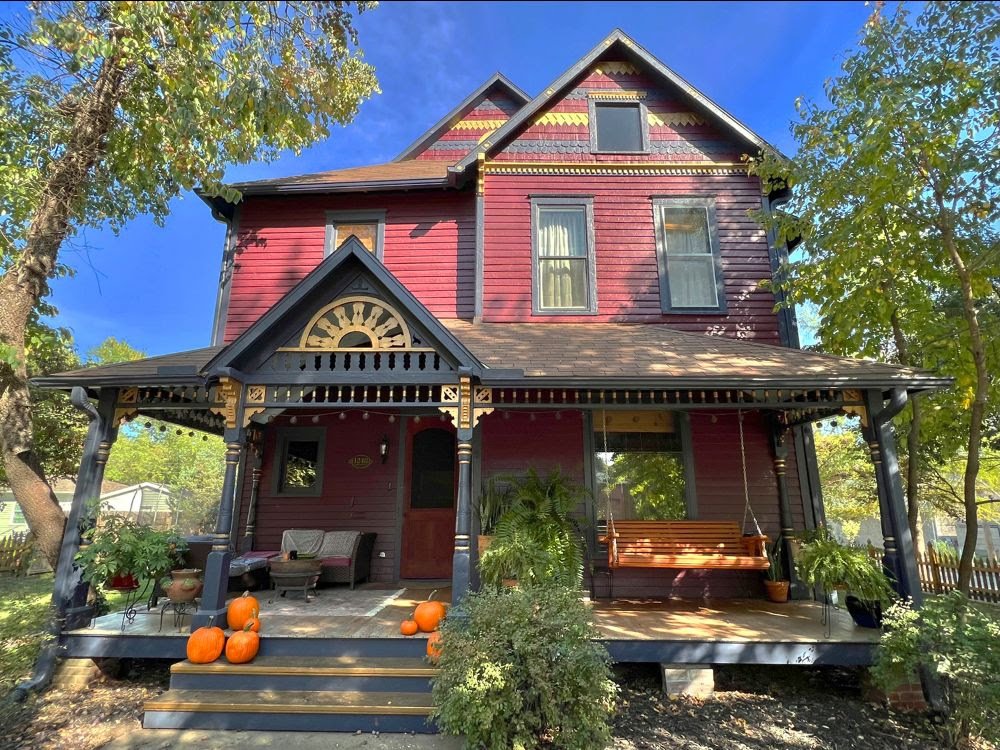LPA Announces Fall 2023 Preservation in Progress Awards
/For its Fall 2023 Preservation in Progress awards, LPA recognizes a comprehensive stone foundation restoration as the first step of a full-house rehabilitation, a structural front porch repair and restoration at the former Colonial Tea Room, and a show-stopping exterior paint job.
1238 Rhode Island Street
Photo courtesy of Toni and Walt Clogston
Photo courtesy of Toni and Walt Clogston
In the South Rhode Island and New Hampshire Street Historic District, Toni and Walt Clogston are spearheading an ambitious restoration of a circa-1870 vernacular gable-front-and-wing National Folk house. The project involves a complete overhaul of the property inside and out, with the goal of transforming what was once a triplex back into a single-family home. Records indicate that the house, which over time had accumulated several additions, may have served as a three-dwelling unit since at least 1887.
courtesy of Stonehouse Construction
The Clogstons embarked on this journey after completing a previous rehab on New Hampshire Street and were drawn to this project due to its proximity to their primary residence and its location within a historic district, which provides an opportunity to use historic tax credits for projects like this.
They anticipated major foundation work but were taken aback by the extent of the damage. The wood sill plate needed replacement and other parts of the framing had also suffered from rot and termite damage. Fortunately, dedicated professionals Mike Myers of Hernly Associates, general contractor Kyle Weiland of Stonehouse Construction and mason Karl Ramberg and his team have designed the proper structural repairs and work is well underway.
Photo courtesy of Stonehouse Construction
Walt and Toni have spent time at the Spencer Research Library learning more about their property, designated in the National Register of Historic Places as the Campbell House, after one-time homeowners William and Helen Campbell. New questions were generated by work on the project, such as why the rafters in an upper-level ceiling are charred. No answers on that one yet, though they have checked old Fire Department records in their effort to find out.
The foundation work is looking great but still is a work in progress as structural and drainage issues are addressed inside and outside the house. Then it’s on to the next phase of the process. The Clogstons anticipate an 18-month timeline for completion.
Drawing from the couple’s prior experience with rehabilitation projects, Toni offers valuable advice. She emphasizes the importance of selecting trustworthy contractors who share your vision and recommends having a substantial contingency budget. Toni and Walt know that preservation work demands resilience in the face of unexpected challenges, sometimes making it a labor of love.
Thanks to their unwavering commitment and the expertise and skills of their chosen professionals, 1238 Rhode Island is being meticulously restored to its former glory. This will be a fun project to keep an eye on as it moves along.
936 Kentucky Street
Anyone driving south on Kentucky Street near downtown in the last month has likely noticed ongoing work at the home of longtime LPA member James Dunn. For a while, the huge, fluted column on the south corner was gone and the porch roof was braced to the ground. Now the column is back in place and the north column is removed and braced. A thorough and careful maintenance and rehabilitation program of the front porch and veranda is well underway.
The Wheeler-Stuart House (KHRI 045-466) is a two-story Colonial Revival built in 1903 that is a contributing property to the Oread Historic District on the National Register of Historic Places. The original brick portion showcases a full-length covered front porch. When a south addition of stucco, two stories tapering to one, was added circa 1925 (a second addition, to the rear, was built later), the porch floor was extended as well.
Sometime in the early 1900s, the property was converted to a tearoom and boarding house, and the Colonial Tea Room, which lasted until around 1947, was born. By the time James and his wife Nancy bought the house in 1967, the apartments and rented rooms remained, and James has lived here, managing the rented rooms and his other apartment properties, since then.
James Dunn with the Colonial Tea Room sign.
Without protection from the elements, the exposed flooring in front of the stucco addition had deteriorated to the point that James worried about its safety. The handrail also needed to be rebuilt. Once Cecil Construction, (Ryan Cecil, principal), who James has worked with for several years—including at 916 Kentucky, a 2018 LPA PIP award winner—was on the job, they quickly realized that the framing underneath the floor needed replacement as well, due to rot and termite damage. The brick pier under the southwest corner of the porch also needed to be rebuilt.
Mason Steve Haines disassembled the brick pier, poured a new concrete one, and wrapped it with brick. Cecil Construction team members replaced the framing and installed a new floor. Their extra thought and care are evident in the design they chose for the handrail balusters and their attachment to the lower rail. The top face of the lower rail is cut at a pitch, so it sheds water easily. The bottom of each baluster is notched to fit the pitched angle of the lower rail, and all components are primed on all sides prior to installation. These are the types of design decisions one should make when working with modern wood, which has more vulnerabilities than the old-growth lumber that carpenters of yesteryear employed.
The work on the veranda side is now complete and the project scope is heading towards the north corner. Congratulations to James Dunn and the Cecil Construction team for a job well done.
1248 Connecticut Street
Photo courtesy of Stella Provias
A major exterior paint job is drawing attention to the Queen Anne house at 1248 Connecticut. Stella Provias, a local realtor, has lived there with her partner Shane Powers and their three children for more than 5 years. When she purchased the house, it needed painting inside and out. She lights up with passion when speaking about her home. “I’ve always been fascinated with older houses,” she says. “I’ve always felt most comfortable and at home in them.”
Provias remembered this home from when she arrived in Lawrence in 1995 to attend KU. At that time, it was a rental where a friend resided. She was enamored with the home the moment she walked in. “Never in a million years did I think I would someday own it,” she says now.
She reached out to the Watkins Museum several years ago to learn more about the house’s history. She was given the following clipping, dated January 1, 1901, from the Lawrence Daily Journal:
“Prof Charles Vickrey’s house at the corner of Lee and Connecticut streets was another one of the more expensive homes built this year. The house is a two-story frame structure, with modern conveniences, and cost about $4,000. It is a very great improvement to the part of town in which it was erected.”
Shortly after purchasing it, Provias had the interior plaster and lath repaired and painted. The exterior took more thought and effort. “I obsessed about the colors for over two years,” she remembers. “I was constantly researching online, driving around town and asking my friends about what the color combination should be.”
Researching online, she stumbled upon the Bair-Stokes House, an 1888 Queen Anne Victorian in Arcata, California. Its enchanting dark purple siding, midnight blue trim and gold accents inspired her.
After a couple of failed attempts with house painters, Provias met Gregory Collins of Absolute Painting. “The crew was awesome,” she says, “and we got to know those guys really well.” The work started last fall and was done by December.
Photo courtesy of Stella Provias
The color scheme was a bold decision, and for the most part people have responded favorably to the dark, nontraditional colors. The spindles and fret work on the front porch along with the gable ornamentation are beautiful. The vibrant hues demand your attention. Most importantly, Provias loves it. “I wanted an eye-catching, dramatic but still refined color combination that passersby would notice,” she says. “It’s captivating, it excites me, and it feels right.”









